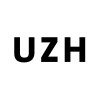Intravenous Treatment of Anemia in Pregnancy
Anemia

About this trial
This is an interventional treatment trial for Anemia
Eligibility Criteria
Inclusion Criteria:
- pregnant women with hemoglobin between 8.0 and 9.9 g/dl and serum ferritin <15 μg/l
Exclusion Criteria:
- vitamin B12 deficiency anemia
- folic acid deficiency anemia
- hemoglobinopathy
- multiples
- liver disease
- kidney disease
Sites / Locations
Arms of the Study
Arm 1
Arm 2
Arm 3
Other
Other
Other
iron therapy with good response
iron therapy with poor response
iron therapy and erythropoietin
Patients with an Hb level between 9.0 and 9.9 g/dl received 200 mg iron sucrose intravenously twice weekly. The maximum total iron dose was 1,600 mg, therefore therapy was stopped if the maximal iron sucrose dose was administered, or target Hb > 10.5 g/dL was achieved.
Patients with an Hb level between 9.0 and 9.9 g/dl received 200 mg iron sucrose intravenously twice weekly. If response to therapy with iron sucrose was poor (i.e. Hb increase <0.7 g/dl after 2 weeks), patients additionally received recombinant human erythropoietin (10,000 U EPREX®, Janssen-Cilag, Baar, Switzerland).
Patients with an Hb between 8.0 and 8.9 g/dl received 200mg iron sucrose and recombinant human erythropoietin intravenously twice weekly.
Outcomes
Primary Outcome Measures
Secondary Outcome Measures
Full Information
1. Study Identification
2. Study Status
3. Sponsor/Collaborators
4. Oversight
5. Study Description
6. Conditions and Keywords
7. Study Design
8. Arms, Groups, and Interventions
10. Eligibility
12. IPD Sharing Statement
Learn more about this trial
